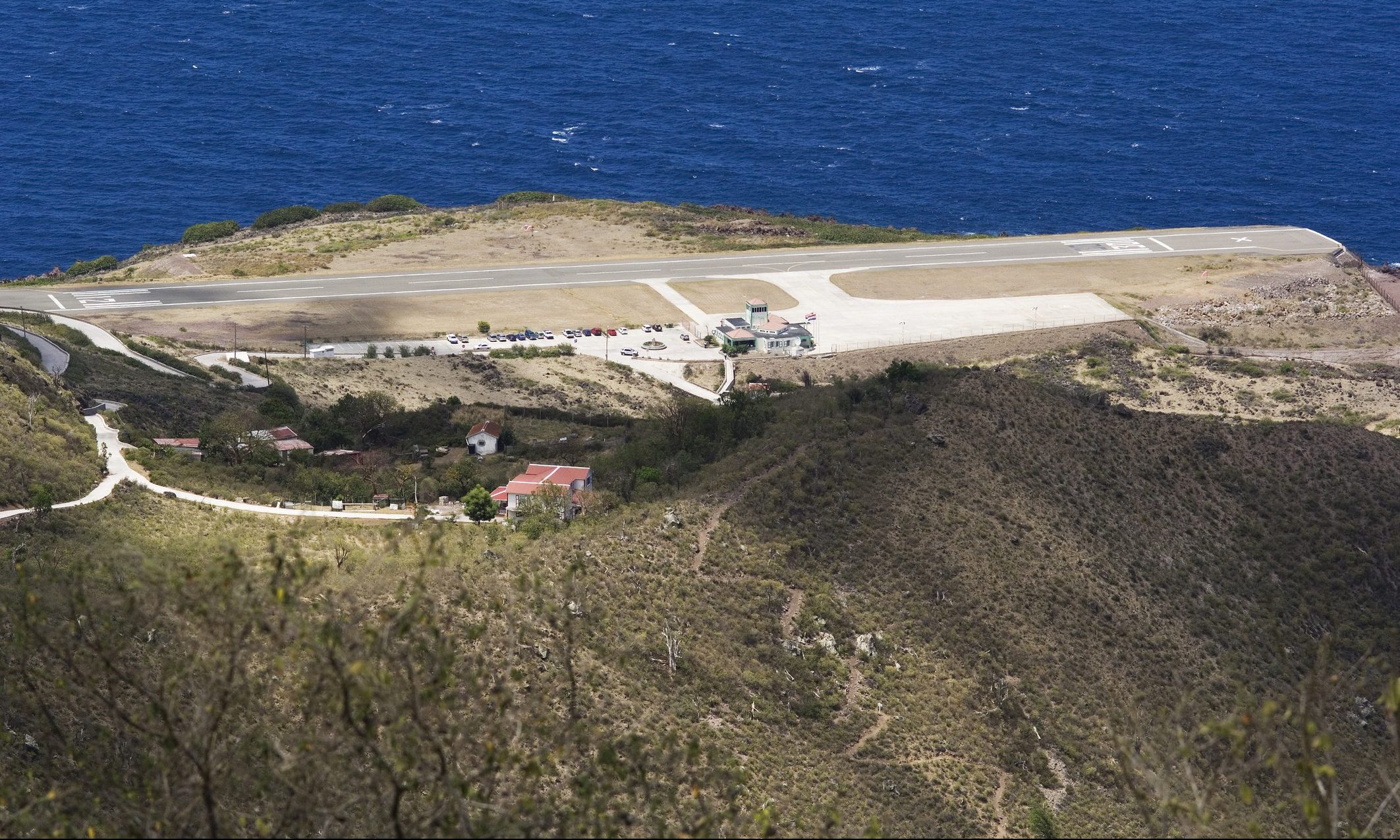

If you travel by air often enough, you likely have your own list of favorite, and less-than-favorite, airports. Domestically, or internationally, a great airport can be a destination in and of itself. Whether it’s the amenities afforded to travelers within the terminals, or the unique take-off and landing experience, an airport can be a one-of-a-kind experience that helps make take-off or arrival a memorable part of the trip.
Videos by Outdoors
Here is our list of the 10 most interesting airports in the world.
1. Tenzing-Hillary Airport, Nepal
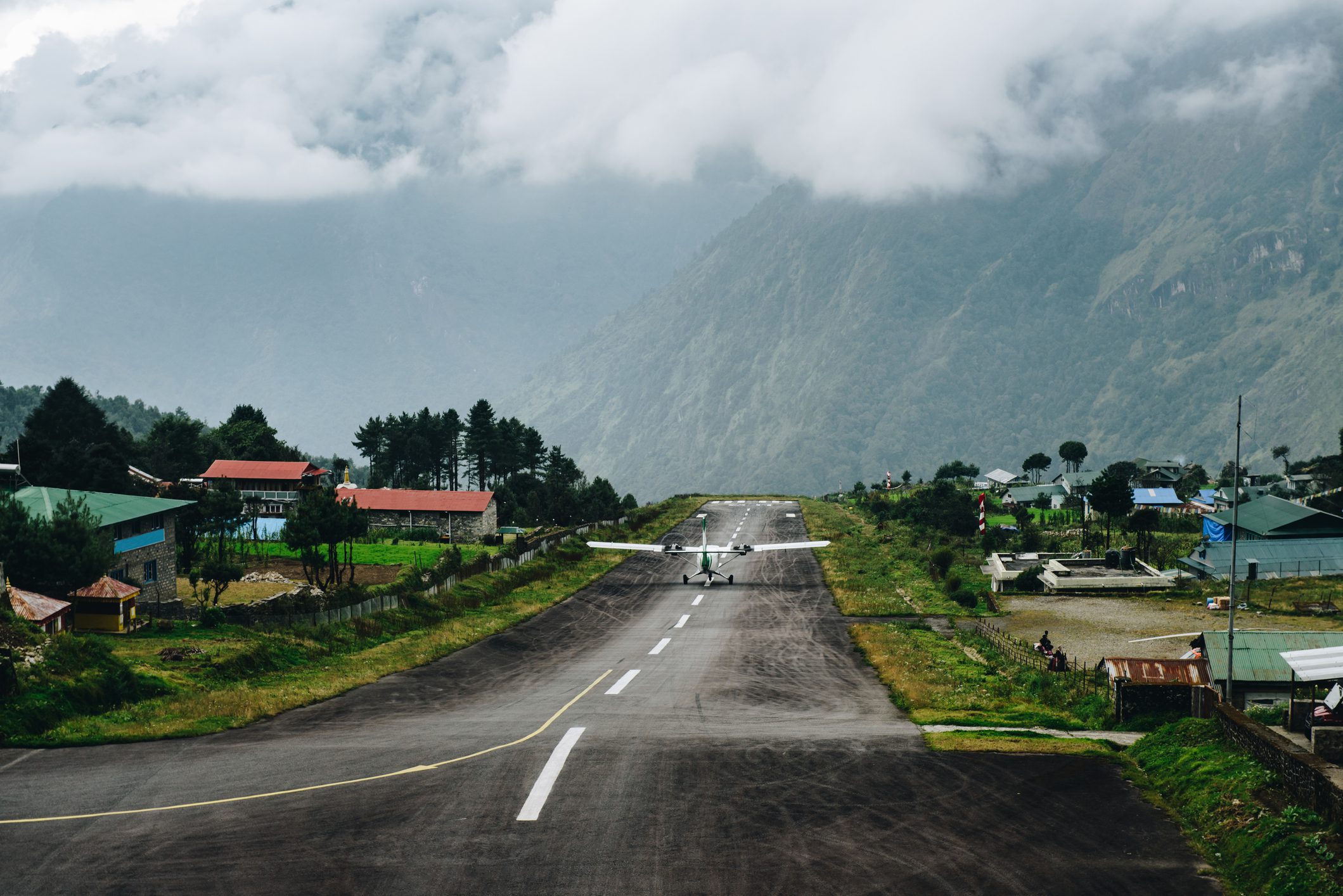
Located at over 9,000-feet in the Himalayas, this gateway to Everest sits at an elevation that makes it one of the most unique airports, as well as one of the most dangerous. Named after Sir Edmund Hillary and Tenzing Norgay, who became the first documented climbers to summit this iconic peak in 1953, this domestic airport features a single, short runway – only 1729-feet.
Still, thousands of adventurers flock to Nepal each year and catch a flight to this airport in Lukla to begin their trek deeper into the Himalayas, towards Everest Base Camp and a two month long adventure to summit the highest mountain in the world.
For pilots flying into the airport, the runway slopes upwards to assist with slowing the plane’s speed, and there is a steep drop to the valley below for planes departing that fail to lift before the end of the runway. Dangerous as it is, the alternative to this roughly 30 minute flight is several extra days of trekking.
2. Ice Runway, McMurdo Station, Antarctica

When winter arrives in the Southern Hemisphere, the seasonal ice runway at McMurdo Station in Antarctica is constructed by packing groomed snow atop sea ice, and remains usable each year until December when the sea ice supporting the runway becomes too unstable to make landing large aircraft feasible.
McMurdo Station is the largest Antarctic station, and is operated by the United States. And while the roughly 85 permanent structures there are all built on the bare volcanic rock of Ross Island, landing strips are built atop sea and shelf ice. Located 13 miles (Phoenix Runway) and 9 miles (Williams Field) from McMurdo Station, these two runways differ in the aircraft that land on them. Phoenix Runway, operational in 2016, is made of snow that is compacted into layers creating both the surface and the foundation of this entirely unique runway atop the McMurdo Ice Shelf. This one-of-a-kind runway is the only runway in the world that uses deep and highly compacted snow in which to land heavy wheeled planes like the U.S. Air Force C-17 cargo jet. Flights between Christchurch, New Zealand and McMurdo Station are provided via the Air Force.
3. Changi Airport, Singapore
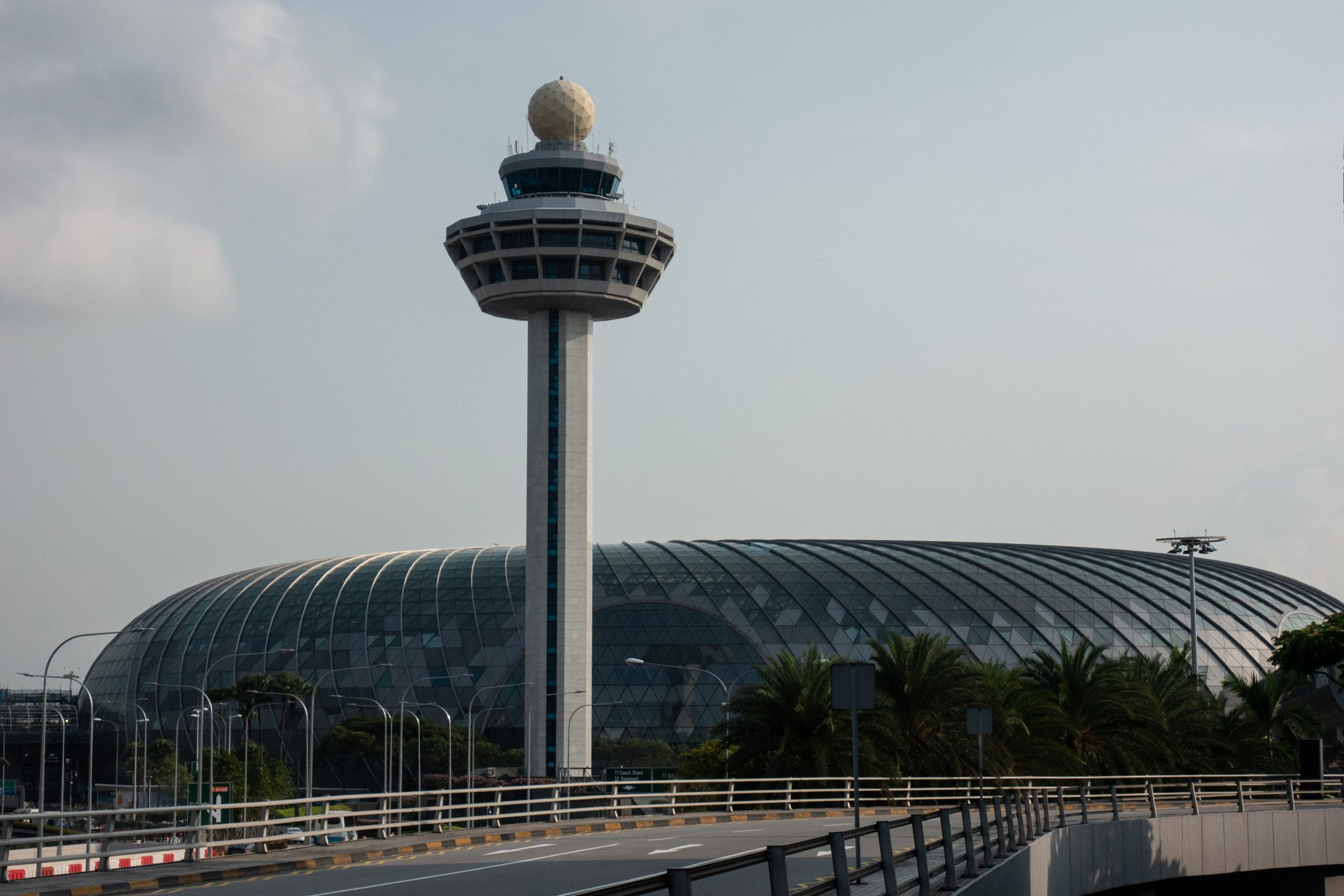
Not all airports have to be extreme to be interesting. Changi Airport in Singapore is an example. The airport consistently ranks as one of the world’s best, and is one busiest airports in the world, with more than 100 airlines flying to more than 400 cities and 100 countries around the world.
However, it’s the airport terminals themselves that make Changi a destination itself. With four terminals and a fifth under construction, the airport features more than 400 shopping outlets and more than 150 dining establishments, across its four terminals and Jewel Changi Airport Complex, which opened in 2019. The airport also has hotel options for passengers that have an extended layover that don’t require them to exit the airport or to go back through security the following day.
The airport also contains the HSBC Rain Vortex, the world’s largest indoor waterfall and the Shiseido Forest Valley interior park features one of the country’s largest indoor plant collections. These combine to provide two interior nature trails for visitors to explore.
4. Princess Juliana International Airport, Saint Martin

Saint Martin is a small island in the Leeward Islands of the Caribbean that is home to two countries, one French and one Dutch. The Princess Juliana International Airport is named after Queen Juliana of the Netherlands (who visited when she was still a princess), and serves both sides of the island.
The airport sits on the Dutch side of the island near Simpson Bay Lagoon and extremely close to Maho Beach. Due to its proximity, beach goers get up-close to the low level approach as planes descend directly over the beach, and into the airport. The plane gets so close that observers can see the treads in the tires on the plane.
Due to this low-level approach, and a runway that is just 7,500 feet in length, pilots are forced to use every inch of the runway on both takeoff and landings. That fact, as well as the numerous injuries tourists who have been injured and killed from plane watching on the beach, the airport is ranked as one of the most dangerous in the world.
5. Juanch E. Yrausquin Airport, Saba
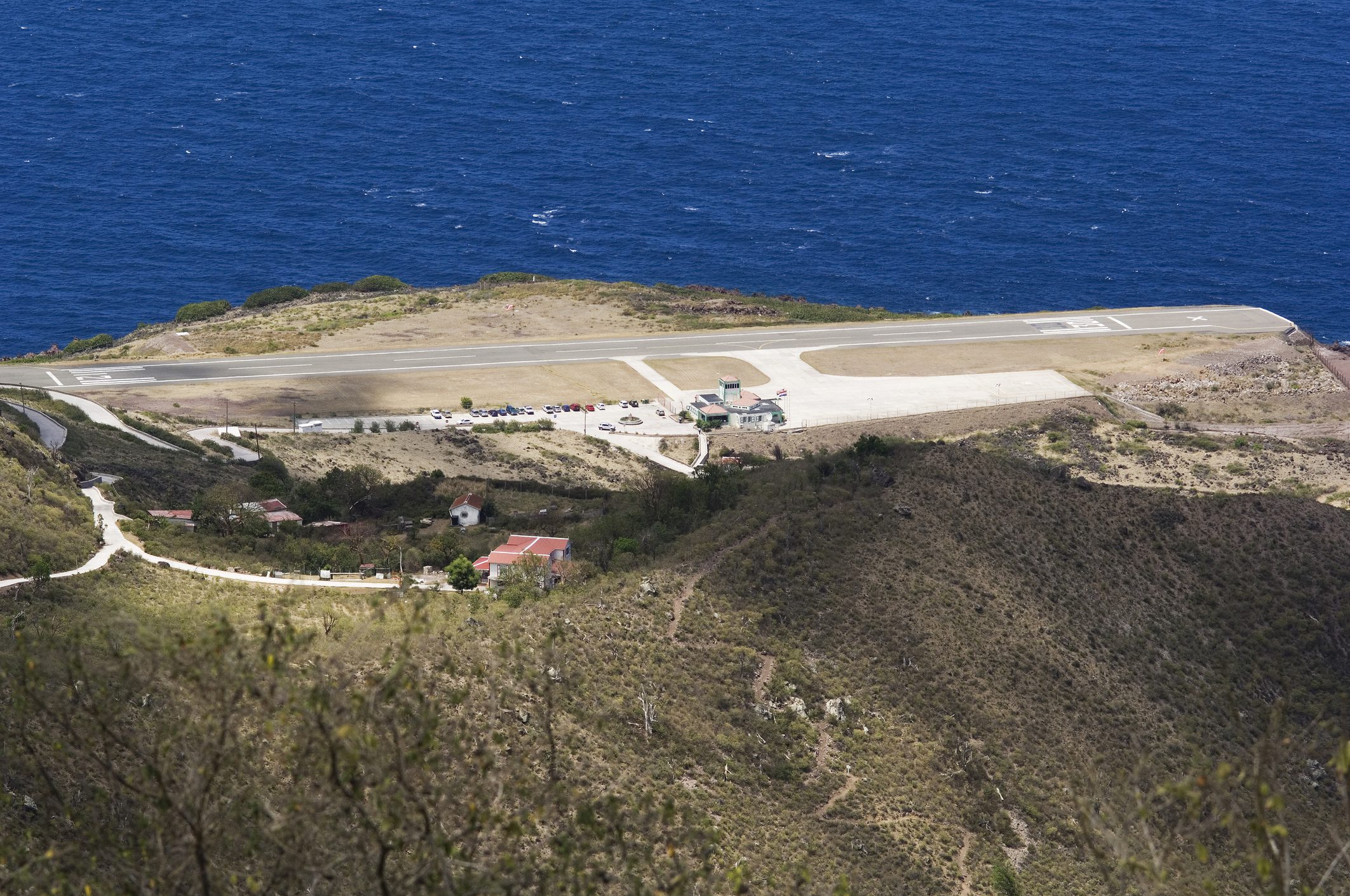
Located just a short flight from Saint Martin, Saba touts the shortest runway in the world: 1300 feet long, with less than a 1000 feet of usable asphalt. The flattest stretch of land on this small Dutch island sports a runway that is just slightly longer than the flight deck of a United States aircraft carrier.
The first plane to land on the island was in 1959. However, it would be approximately another four years before a permanent runway was completed and the airport opened for operation in 1963. Such a short runway makes takeoff and landings only achievable via STOL (short takeoff and landing) aircraft like the 19-seater de Havilland Canada DHC-6 Twin Otters. Due to the danger of landing on such a short runway, only specialty trained pilots are permitted to fly to Saba and the Saint Martin based airline, Winair, is the only airline that operates flights to and from the island.
Aside from the short runway, other factors affecting flights in and out of Saba include wind and weight restrictions. And if it’s raining, no flights are permitted to land as every foot of the runway must be dry and usable to ensure a safe landing.
6. Incheon International Airport, South Korea

Often referred to as Seoul-Incheon International Airport, it is the largest airport in South Korea and one of the busiest and largest airports in the world, and also consistently ranks as one of the best and cleanest.
Opened in 2001, this airport in the country’s capital of Seoul is another engineering marvel in that it was built on artificially created land between two small islands, thus connecting the islands. Within the terminal, there are seven themed gardens including: rock, flower, cactus, water, pine tree and flowering tree. For those looking to see how baggage is handled at one of the world’s busiest airports, the airport offers a multimedia experience via a virtual 360° VR tour of the baggage handling system. And for those looking to stretch their legs with a little more active approach, there is a year-round ice skating rink. And while it’s free to enter, you’ll need to rent skates unless you pack a pair in your carry-on.
Other amenities include a casino, the Museum of Korean Culture, a spa and several presentations of Korean culture in the terminal. The options for exploring Korean cuisine abound throughout the terminal along with many sleeping options and free showers available in the airport.
7. Gibraltar International Airport, Gibraltar
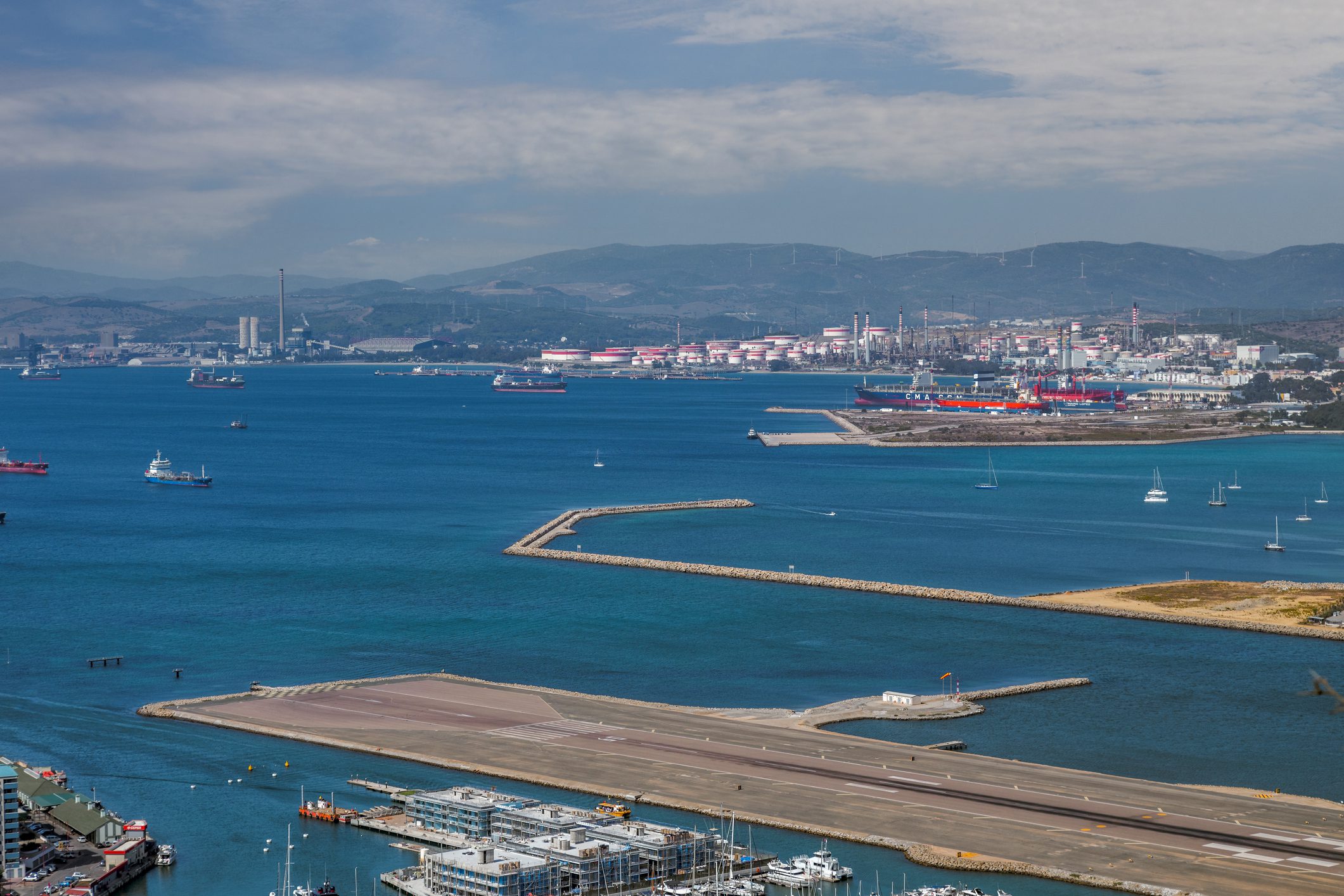
Gibraltar is a tiny British Overseas Territory that is situated between Spain and Morocco, between Europe and Africa. It is also a heavily fortified British naval and air base that guards the only entrance and exit to the Mediterranean Sea. While the airport was originally built during World War II as an emergency airport, the facility has undergone several expansion projects since its creation to allow for larger aircraft to land. This has been accomplished by taking excavations from the famous Rock of Gibraltar itself and filling in part of the bay to extend the runway length. The strip is intersected by Winston Churchill Avenue, the only road that connects the island to the Spanish mainland, and every time that a plane lands or departs, the road is closed.
The area is also notorious for strong cross winds around the Rock and across the Bay of Gibraltar, which makes this terminal consistently rank as one of the most extreme airport experiences in the world.
8. Courchevel Internnational Airport, France
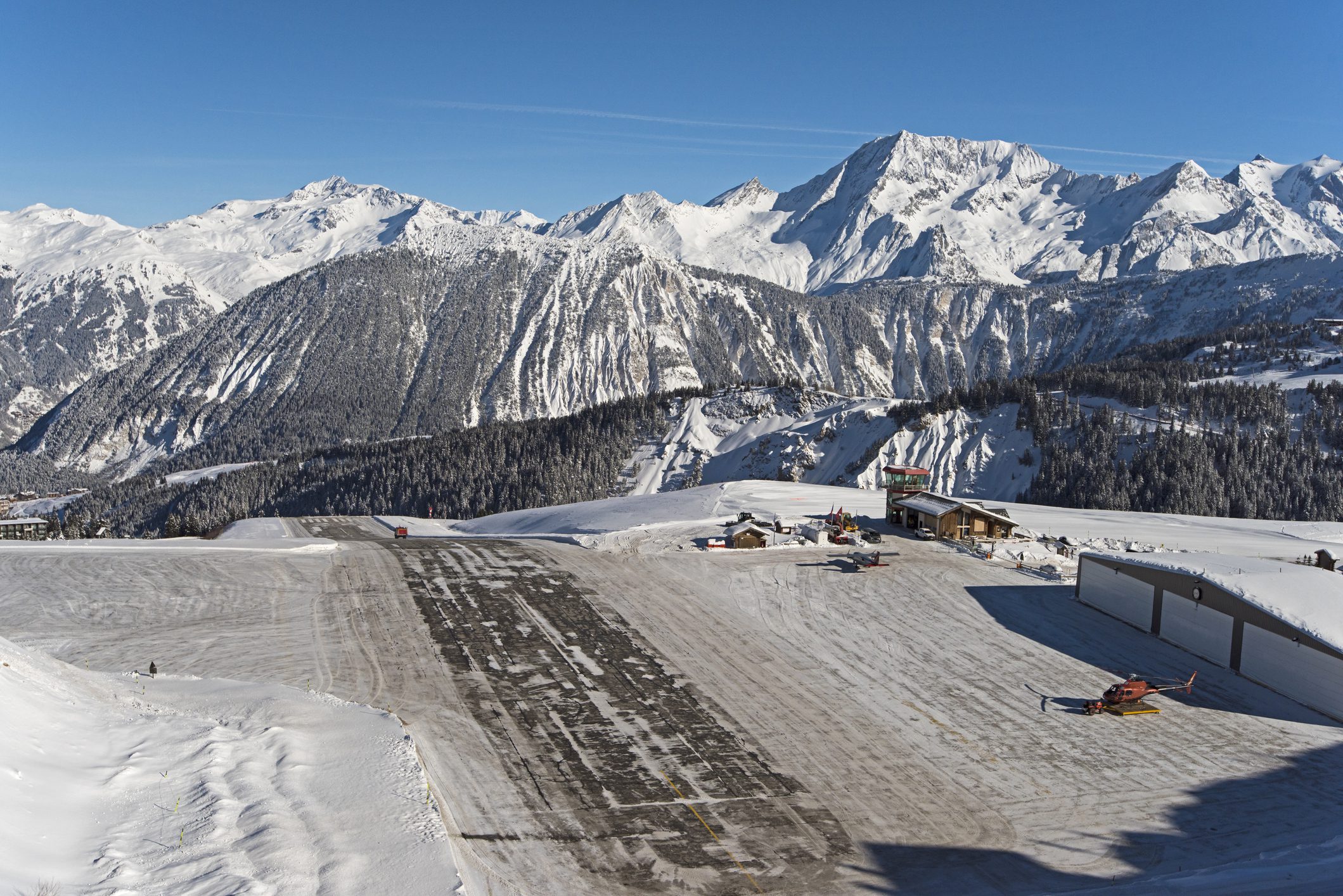
Located over 6000 feet up in the French Alps, this airport is ski ready upon landing. The 1800-foot runway makes it among the shortest in the world for commercial aircraft. Due to the mountainous terrain, planes must commit to touching down, so fog, low lying clouds and other inclement conditions make landing at this airport unlikely during these conditions.
In addition to its short runway, the airport also features a steeply sloped (18.5% gradient) runway. STOL (short takeoff and landing) aircraft have traditionally been used to reach this airborne airport but most airlines have stopped serving the airport due to the conditions.
Courchevel is part of the Three Valleys resort making it the largest connected ski area in the world. For James Bond fans, you may recognize the airport from the 1997 film, Tomorrow Never Dies.
9. Kansai International Airport, Japan

Built to serve the cities of Osaka, Kobe and Kyoto, Kansai International Airport serves as one of the busiest airports in Japan. The first airport constructed atop an artificial island, Kansai opened in 1994 with a construction cost of more than $20 billion USD. This engineering marvel was designed to withstand earthquakes, typhoons and storm surges.
The airport sits in the middle of Osaka Bay located off the Honshu shore. A nearly two-mile long bridge connects the island to the mainland. The airport has also weathered multiple earthquakes and typhoons with limited disruption to services. It has also served as the benchmark for other artificial island projects since its completion almost three decades ago.
10. Barra Airport, Scotland
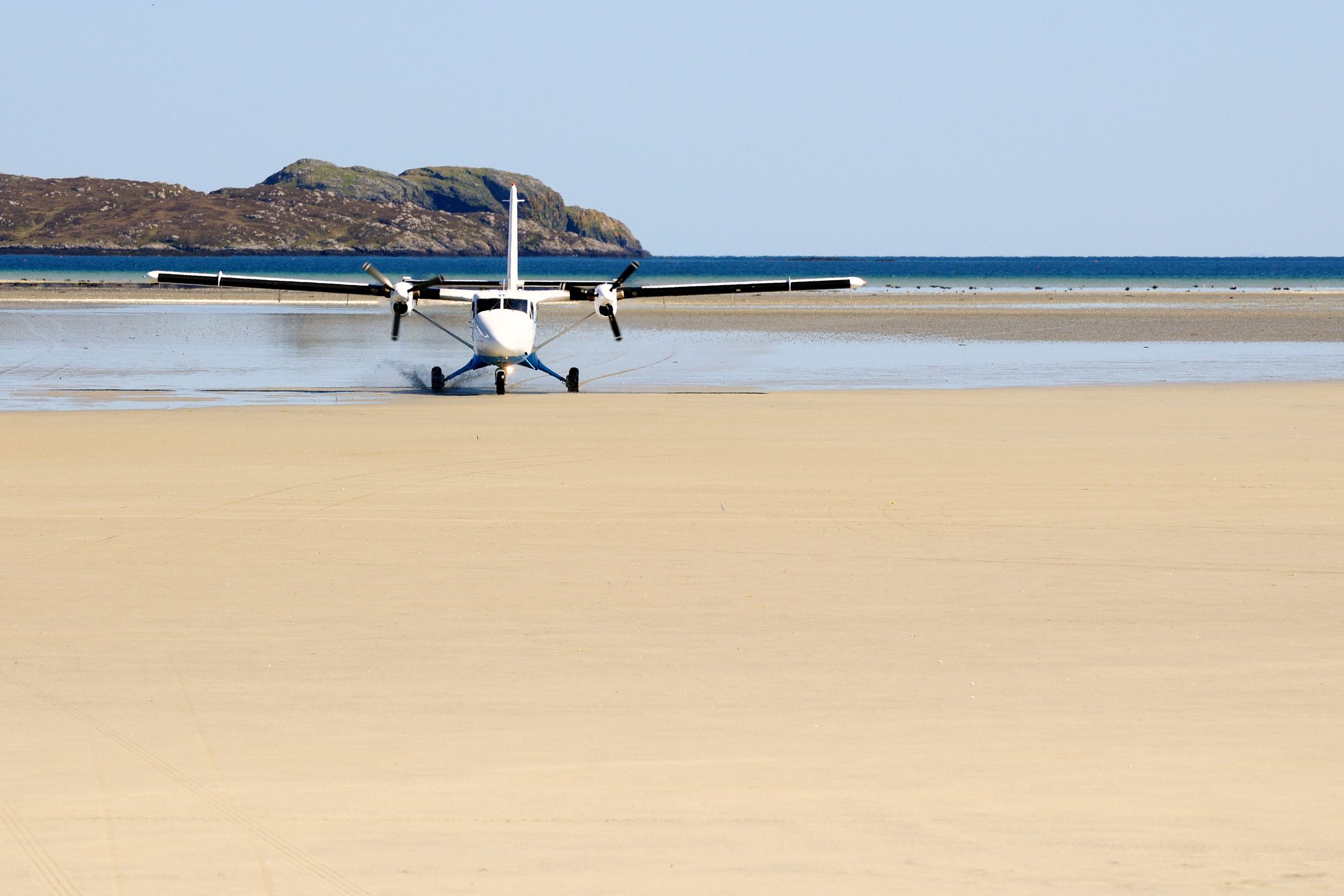
At high tide, the runways of Barra Airport are under water. At low tide, there are a series of three runways that are marked with wooden poles that establish the end of each runway. The airport, located on the Isle of Barra in the Outer Hebrides, provides much needed service and goods to the residents, and has also become a sought after tourist destination due to its uniqueness.
Twice daily flights to and from Glasgow vary with the tidal schedule. In addition to the daily flights via the de Havilland Canada DHC-6 Twin Otters, the airport also has dozens of private aircraft utilize the airport annually. People are allowed to walk about on the runways when the facility is closed and the windsocks are down, as the airport then reverts to a public beach.











Actually, Bond fans know the airstrip is used in Goldeneye (1995) not TND.
Hi,
You should also explore St Helena Airport. Very challenging for pilots, ETOPs, isolated, wind shear central and offset approach (N to S approach), converging winds at touch down point (S to N approach), cliff top (N end of runway), fog/low visibility, etc.
Also check out Skukuza Airport (SKZ) in the Kruger National Park. Smallest most beautiful airport ever surrounded by the wild. Amazing.
Thanks
Mike